Positive and negative signaling through SLAM receptors regulate synapse organization and thresholds of cytolysis
- PMID: 22683123
- PMCID: PMC3389133
- DOI: 10.1016/j.immuni.2012.05.017
Positive and negative signaling through SLAM receptors regulate synapse organization and thresholds of cytolysis
Abstract
X-linked lymphoproliferative syndrome, characterized by fatal responses to Epstein-Barr virus infection, is caused by mutations affecting the adaptor SAP, which links SLAM family receptors to downstream signaling. Although cytotoxic defects in SAP-deficient T cells are documented, the mechanism remains unclear. We show that SAP-deficient murine CD8(+) T cells exhibited normal cytotoxicity against fibrosarcoma targets, yet had impaired adhesion to and killing of B cell and low-avidity T cell targets. SAP-deficient cytotoxic lymphocytes showed specific defects in immunological synapse organization with these targets, resulting in inefficient actin clearance. In the absence of SAP, signaling through the SLAM family members Ly108 and 2B4 resulted in increased recruitment of the SHP-1 phosphatase, associated with altered SHP-1 localization and decreased activation of Src kinases at the synapse. Hence, SAP and SLAM receptors regulate positive and negative signals required for organizing the T cell:B cell synapse and setting thresholds for cytotoxicity against distinct cellular targets.
Copyright © 2012 Elsevier Inc. All rights reserved.
Figures

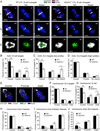
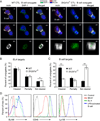
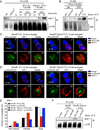
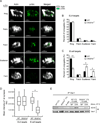
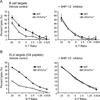

Similar articles
-
The receptor Ly108 functions as a SAP adaptor-dependent on-off switch for T cell help to B cells and NKT cell development.Immunity. 2012 Jun 29;36(6):986-1002. doi: 10.1016/j.immuni.2012.05.016. Epub 2012 Jun 7. Immunity. 2012. PMID: 22683125 Free PMC article.
-
The adaptor SAP controls NK cell activation by regulating the enzymes Vav-1 and SHIP-1 and by enhancing conjugates with target cells.Immunity. 2012 Jun 29;36(6):974-85. doi: 10.1016/j.immuni.2012.03.023. Epub 2012 Jun 7. Immunity. 2012. PMID: 22683124
-
SAP controls the cytolytic activity of CD8+ T cells against EBV-infected cells.Blood. 2005 Jun 1;105(11):4383-9. doi: 10.1182/blood-2004-08-3269. Epub 2005 Jan 27. Blood. 2005. PMID: 15677558
-
NK cell regulation by SLAM family receptors and SAP-related adapters.Immunol Rev. 2006 Dec;214:22-34. doi: 10.1111/j.1600-065X.2006.00453.x. Immunol Rev. 2006. PMID: 17100873 Review.
-
Regulation of cellular and humoral immune responses by the SLAM and SAP families of molecules.Annu Rev Immunol. 2007;25:337-79. doi: 10.1146/annurev.immunol.25.022106.141651. Annu Rev Immunol. 2007. PMID: 17201683 Review.
Cited by
-
The adaptor molecule SAP plays essential roles during invariant NKT cell cytotoxicity and lytic synapse formation.Blood. 2013 Apr 25;121(17):3386-95. doi: 10.1182/blood-2012-11-468868. Epub 2013 Feb 21. Blood. 2013. PMID: 23430111 Free PMC article.
-
Molecular mechanisms of T cell co-stimulation and co-inhibition.Nat Rev Immunol. 2013 Apr;13(4):227-42. doi: 10.1038/nri3405. Epub 2013 Mar 8. Nat Rev Immunol. 2013. PMID: 23470321 Free PMC article. Review.
-
Diacylglycerol Kinase alpha in X Linked Lymphoproliferative Disease Type 1.Int J Mol Sci. 2021 May 29;22(11):5816. doi: 10.3390/ijms22115816. Int J Mol Sci. 2021. PMID: 34072296 Free PMC article. Review.
-
Co-Stimulatory Molecules during Immune Control of Epstein Barr Virus Infection.Biomolecules. 2021 Dec 28;12(1):38. doi: 10.3390/biom12010038. Biomolecules. 2021. PMID: 35053187 Free PMC article. Review.
-
Signaling lymphocytic activation molecule (SLAM)/SLAM-associated protein pathway regulates human B-cell tolerance.J Allergy Clin Immunol. 2014 Apr;133(4):1149-61. doi: 10.1016/j.jaci.2013.10.051. Epub 2013 Dec 25. J Allergy Clin Immunol. 2014. PMID: 24373350 Free PMC article.
References
-
- Bottino C, Falco M, Parolini S, Marcenaro E, Augugliaro R, Sivori S, Landi E, Biassoni R, Notarangelo LD, Moretta L, Moretta A. NTB-A, a novel SH2D1A-associated surface molecule contributing to the inability of natural killer cells to kill Epstein-Barr virus-infected B cells in X-linked lymphoproliferative disease. J Exp Med. 2001;194:235–246. - PMC - PubMed
-
- Brossard C, Feuillet V, Schmitt A, Randriamampita C, Romao M, Raposo G, Trautmann A. Multifocal structure of the T cell - dendritic cell synapse. Europ J Immunol. 2005;35:1741–1753. - PubMed
Publication types
MeSH terms
Substances
Grants and funding
LinkOut - more resources
Full Text Sources
Other Literature Sources
Molecular Biology Databases
Research Materials
Miscellaneous

